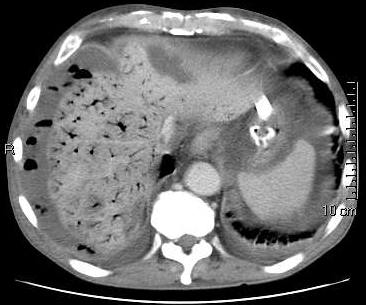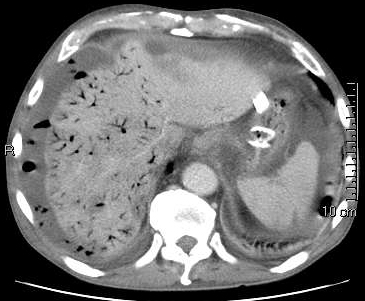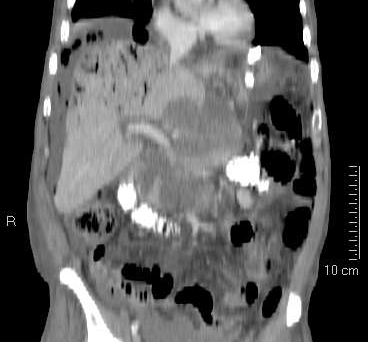GI Radiology > Peritoneum > Air > Portal Vein
Gas in Portal Vein
![]()
|
Clinical With the exception of umbilical vein catheterization in children, gas in the portal veins is a grave prognostic indicator and almost always signals imminent death. There are two major causes of gas in the portal veins. The first is necrosis of the bowel wall from either mechanical obstruction or mesenteric artery occlusion. The break down of the bowel wall allows gas to penetrate the vessel walls and flow to the liver. The second mechanism involves infection of the bowel wall. This may be caused by bowel necrosis with secondary infection with gas producing organisms, or may be due to overwhelming enterocolitis.
Radiological findings Gas in the portal veins has a very characteristic appearance. The gas follows the centrifugal flow of the portal veins and thus appears as radiating tubular radiolucencies branching from the porta hepatis. Gas seen in the outermost 2 cm of the liver is indicative of portal vein gas.
This CT demonstrates massive pneumatosis intestinalis and portal venous gas. Both can be seen on the cross-sectional images as well as the scout view.
|



